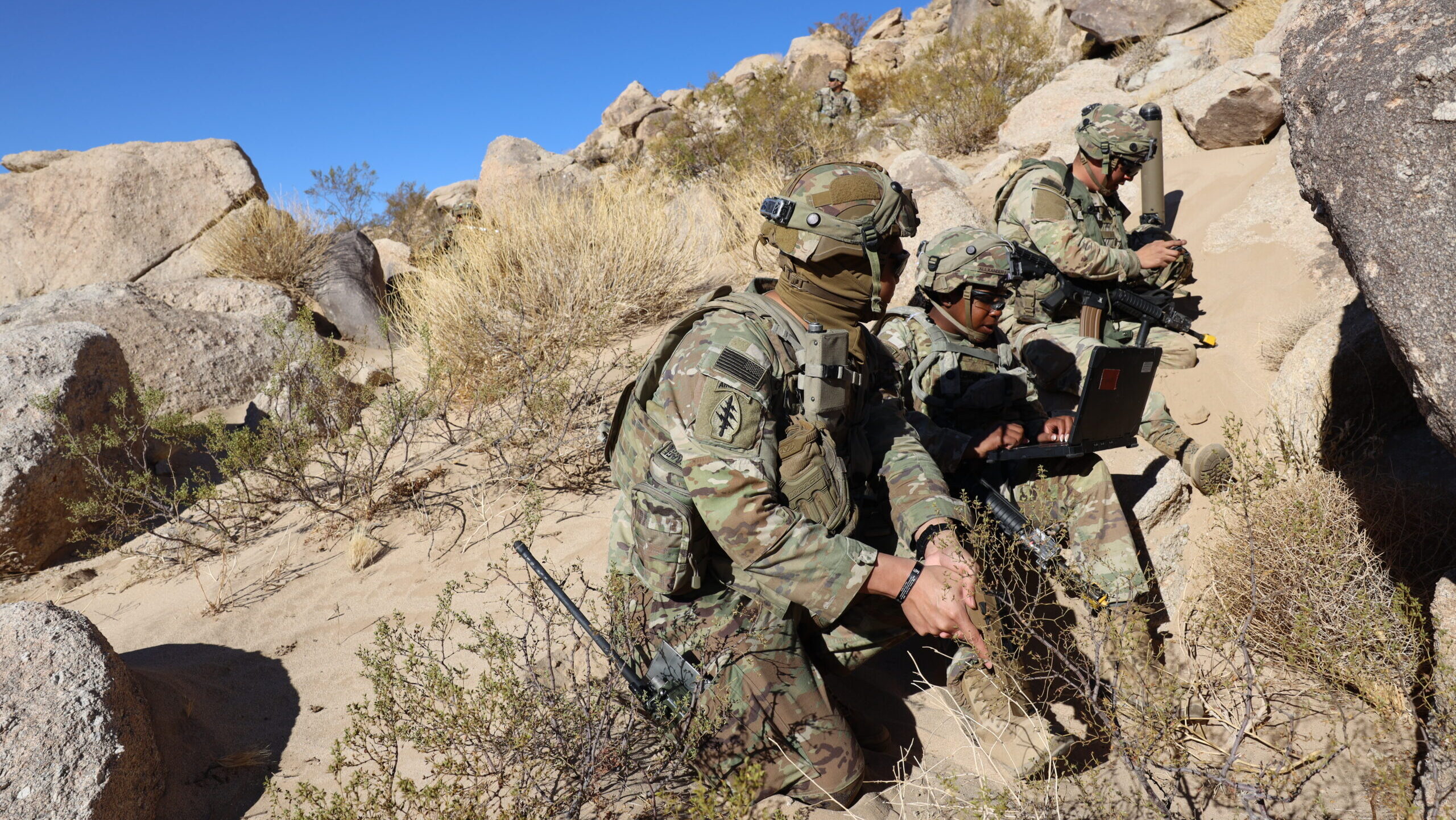Copyright Breaking Defense

WASHINGTON — A recent Pentagon directive officially broadens the responsibility of irregular warfare (IW) well beyond the remit of special operations forces, in a move that former practicioners and experts said could be a significant development for America’s posture in the gray zone — but only if there’s real-world follow through. At the end of September, Undersecretary of Defense for Policy Elbridge Colby signed off on an updated Department of Defense Instruction for Irregular Warfare, stating that irregular warfare “is a joint force activity conducted by conventional forces and special operations forces.” The dry language, experts told Breaking Defense, amounts to the formalization of a push the military has been attempting, with limited success, for years. “It’s not like irregular warfare has been completely ignored by elements of the US [Defense] Department outside of the special operations community. But I think this is helpful as a directive in bringing the applicability of irregular warfare outside of just the special operations community and highlighting its importance in competition for the department at a much bigger level,” Seth Jones, president of the Defense and Security Department at the Center for Strategic and International Studies, told Breaking Defense. “When I look at irregular warfare and its utility, for it to be effective, including during the Cold War, it had to be much bigger than just a special operations activity,” said Jones, who previously served in special operations roles. “It really needs to leverage the full conventional might of the US military, as well as the capabilities across other government agencies.” However, Jones and some former servicemembers with intelligence or irregular warfare experience warned that the “instruction” still may not be enough. “It’s necessary, but not sufficient,” Alex Crowther, a retired Army colonel strategist who practices unconventional competition, said in an interview. Crowther said that DoD instructions don’t hold the same weight as other forcing functions in the department such as strategies, doctrine or even joint publications “It’s really good to be talking about this stuff,” he said, “but … the place where we need to see it is the National Defense Strategy and then the National Military Strategy because those are the things that everybody, [from] all the planners at the Pentagon and the combatant commands and the services, all read those and pay attention to those.” Meeting The Adversary In The Gray Zone The instruction also updates the definition of irregular warfare to be more expansive, noting that it is used by state and non-state actors to assure or coerce others through “indirect, non-attributable, or asymmetric activities.” “IW provides an important complement to other joint force activities, operations, and investments in both competition and conflict,” the instruction states. “IW strategies and tactics can involve the threat or use of force, including the use of non-lethal weapons, for purposes other than physical domination over an adversary … States and non-state actors can conduct IW when they cannot achieve their strategic objectives by non-warfare activities or conventional warfare.” Those activities, which have traditionally been carried out primarily by special operations forces on the US military side, include unconventional warfare, counterinsurgency, psychological operations and civil affairs, among others. However, the involvement of conventional forces in irregular warfare, especially in a support role, is hardly a new concept, especially in the counterinsurgency context during the past 20 years of the war on terror. In an annex to the 2020 National Defense Strategy, for example, the DoD said it “must institutionalize irregular warfare as a core competency for both conventional and special operations forces, sustaining the ability to impose costs and create dilemmas for our adversaries across the full spectrum of competition and conflict.” Over the last few years, the services have been building their own information and irregular forces within the conventional units, like the Army’s Theater Information Advantage Detachments and the Marine Expeditionary Force Information Groups, among others. But with the Global War on Terror in the rearview, and as the US settles in for a longterm “competition” with its primary rival China, experts said the role of irregular warfare has grown — including in Beijing, where historical attitudes toward irregular warfare have been different. Whereas the US has typically held a more binary view of conflict, the experts said adversaries like China have viewed it as more of a contiuum, in which irregular warfare is a gray middle ground. “If one looks at the United States’ most notable challenger, the Chinese, they have long focused on this aspect of warfare,” Jones said. “This is more trying to bring up the US capabilities in areas that its adversaries are, some of its major adversaries, are spending resources, time and attention to.” He pointed to China’s so-called three warfares strategy: public opinion warfare, psychological warfare and legal warfare or lawfare. None of those, he said, really involve kinetic activity, but rather, what he would term irregular warfare and the use of information to influence populations. While irregular warfare operations are by design difficult to attribute, Jones noted that China is suspected, for instance, of having severed undersea cables linking Taiwan to the outside world. Short of a full military conflict over Taiwan, he said he expected the gray zone tactics to continue indefinitely in a region in which the US will be obligated to be more present. One of the major policy implications of the new instruction, Jones said, involves support that could be lent to partners to help blunt the activity of mutual adversaries such as Russia or China. If the US wants to impose costs on China, especially seeking to blunt its activity in Taiwan, the US needs to work with the Taiwanese to ensure it is more equipped in the IW realm. America’s successful training and equipping of Ukrainian forces ahead of Russia’s 2022 invasion, carried out by US special operators as well as some conventional forces, did not deter Russian aggression, but did help blunt it. Moreover, the US could learn from Ukraine’s own asymmetric and irregular techniques, like its audacious Operation Spiderweb, in which the Ukrainians clandestinely shipped hundreds of drones to Russian territory that were then free to cause millions of dollars of damage to major Russian weapons platforms such as aircraft. “There’s some massive policy implications in key areas that I think are big priorities of the department,” Jones said. Brian Russell, a retired Marine colonel who served in cyber and information-related commands, said he’s also heartened by the new DoD instruction because it recognizes the role conventional forces can play in newer warfighting domains: cyber and space. “What I think excites me about the new directive is it does highlight the importance of cyber and space as domains … it’s like a recognition that, military forces are applied, in fact, across a spectrum of conflict and this is just kind of the formal recognition of that reality,” he said in an interview. “The other thing that excites me about the directive is it does call out the need for operations in the information environment. … I’m pretty excited about the directive of putting those things, I’ll call it, you know, the multi-domain aspect, cyberspace is important, and then the importance of operating the information environment.” Russell also said going forward, the instruction could help special operations forces focus on what are truly special operations missions and capabilities. “It’s probably going to let SOF get back to doing some of those harder mission sets and why they’re designed the way they are,” he said. ‘Proof Will Be In The Pudding’ Still, it remains to be seen how the instruction is translated into real-world operations, if at all. “I want to believe it will lead to progress, but I have seen this movie so many times before where there have been these bursts of interests … but I’ve seen this movie so many times before. I’ll believe it when I see it,” a former top defense official in this sphere told Breaking Defense on the condition of anonymity, echoing concerns of analysts. “The proof will be in the pudding.” The ex-official and others said that irregular warfare isn’t well understood outside specialist circles, which could lead to the commanders of conventional forces taking a skeptical eye to particular missions. It’s often easier, they said, to get approval for a missile strike than an influence operation. Crowther, the retried Army colonel, pointed out that historically it’s been difficult to integrate irregular warfare into the culture of conventional forces. “It’s really important for everybody that isn’t in special operations to understand that they’re part of the solution in irregular warfare as well,” he said. “The name’s irregular. It says it all. They’re not irregular, they’re regular forces and they’re very conventional and hierarchical. Honestly, irregular warfare is neither conventional nor hierarchical.” Another problem: There is no promotion structure, and thus, little incentive to conduct these types outside special operations, among conventional forces, the former official said. “If someone were to ask me, how many general officers have been created, have been promoted, have been elevated to flag rank because of their skill proficiency and risk tolerance in the area of irregular warfare, my answer will be, I can’t think of a single one,” the ex-official said. “Which said a different way means there’s no professional incentive for a service member, officer, non-commissioned officer, flag officer to devote their careers to this because all they have to do is look around say, ‘Well, nobody’s ever been promoted for doing this, so why am I doing this?’” Plus, the services have their own responsibilities, personnel and capabilities to fill, and irregular warfare typically isn’t on that list. “In the bureaucracy there, there still is likely to be what I’ll call in irregular warfare within the department to continue to make this a priority. I don’t necessarily believe that all senior service members within the Navy, the Air Force, the Marine Corps and the Army are suddenly going to gravitate towards the importance of irregular warfare,” Jones said. “I think it is a contested environment in how much service chiefs are going to be willing to cede terrain from their typical focus on conventional warfare and conventional capabilities.” As such, Crowther said, the future of the irregular warfare in regular formations might come down to just who’s behind the push. “Until you get the senior leaders of the military to buy into it, which is why you need to see it in the NDS and the NMS, you need to see the same message in all of the documentation that goes along, [it] should start with the National Security Strategy and go down into the service doctrine and everything in between,” Crowther said.



